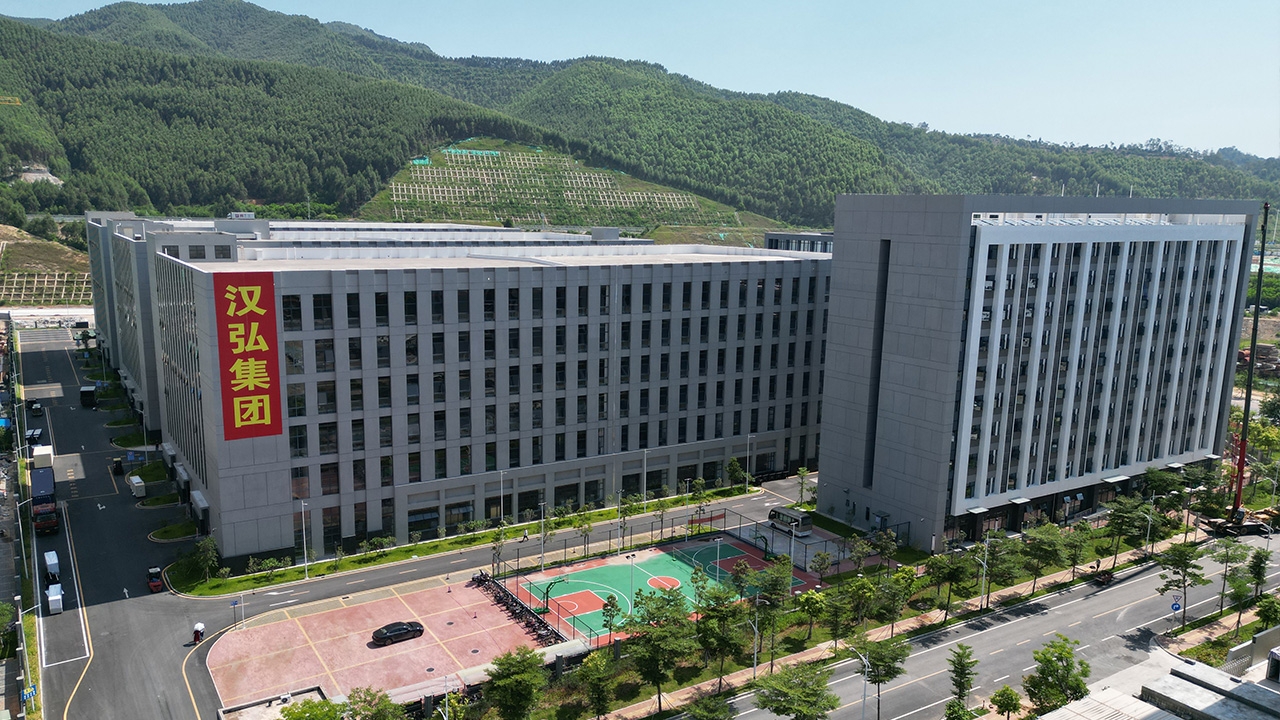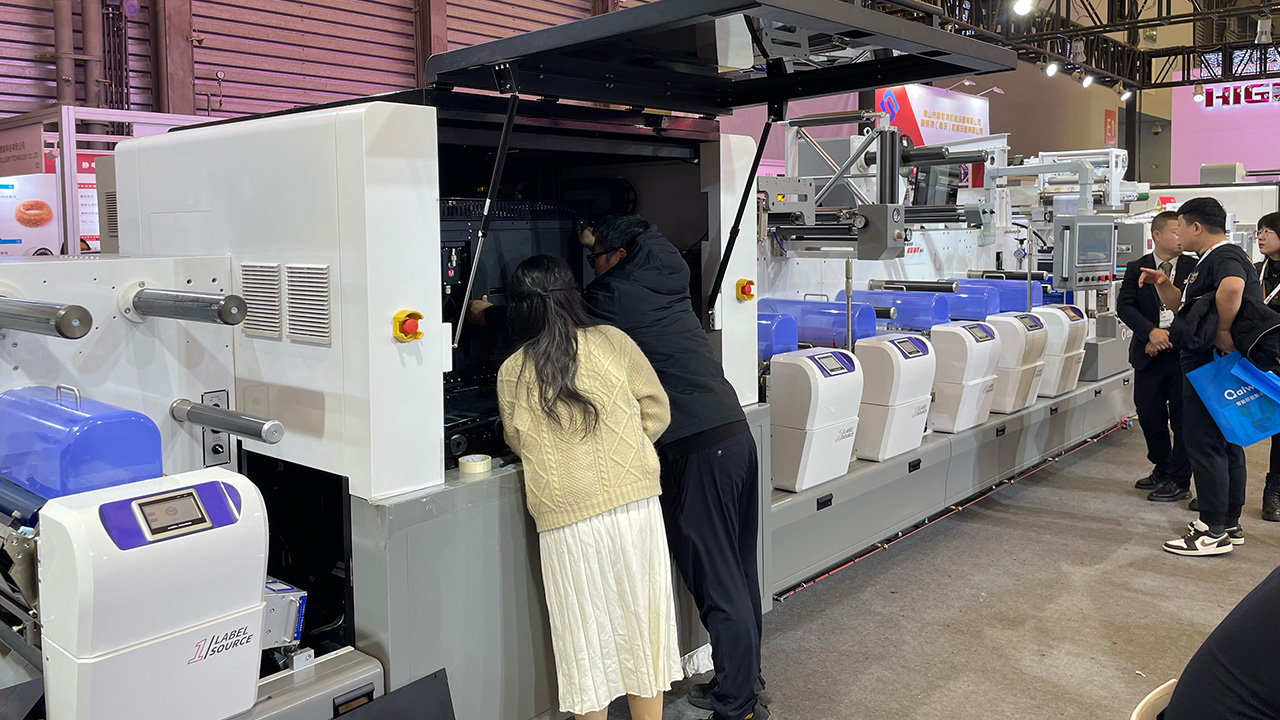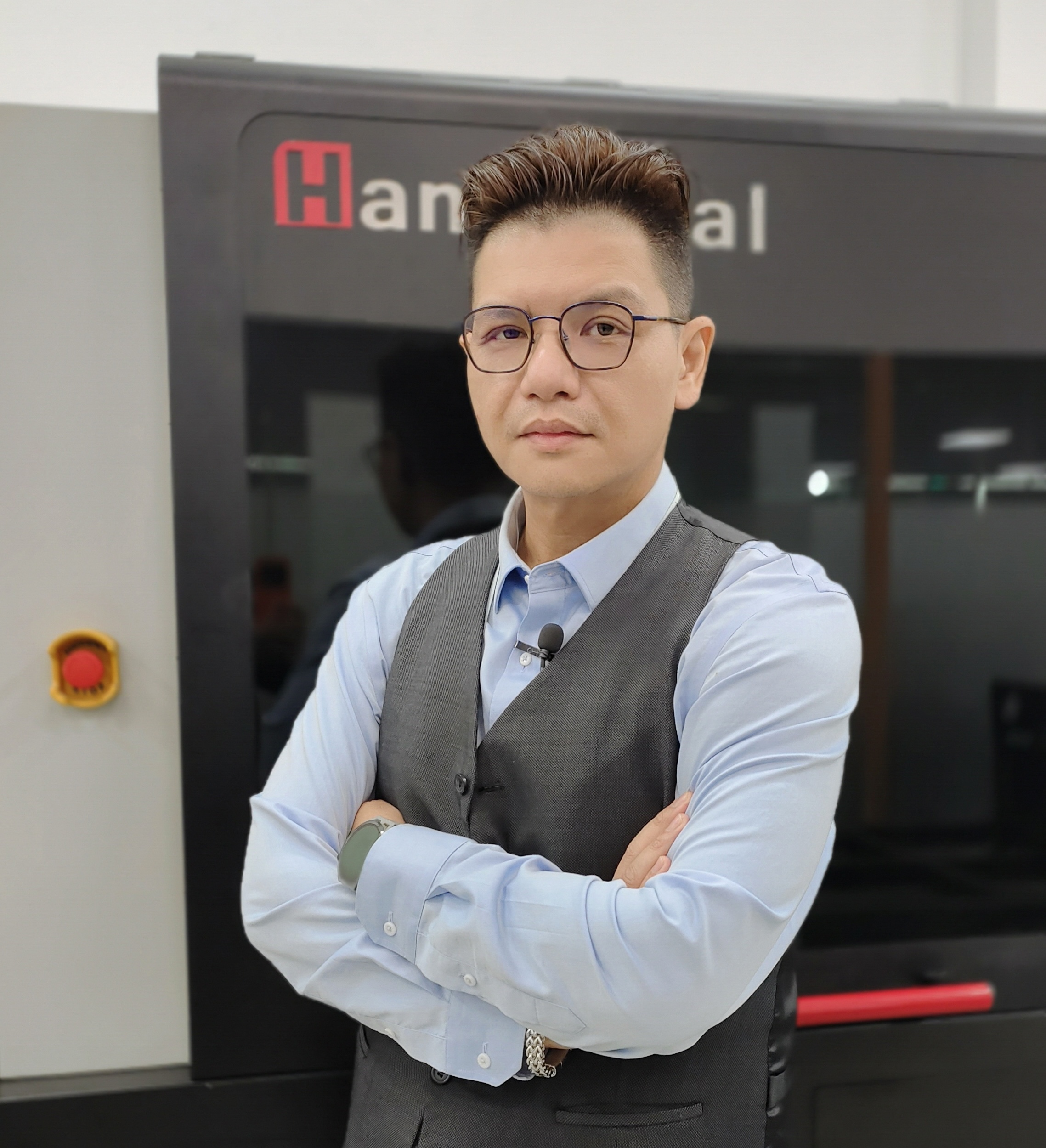HanGlory Group invests in hybrid future
Chinese developer of inkjet drive technology commits to standalone and hybrid label press development.

HanGlory manufacturing and R&D factory complex
Chinese print and converting machinery suppliers have been making major strides on the world stage at recent Labelexpo shows around the world, but not much is known about their backgrounds.
L&L recently got the chance to look in depth at one of these suppliers, Shenzhen HanGlory Group, whose upgraded LabStar 330S UV inkjet press – in both standalone and hybrid formats – was introduced to visitors at Labelexpos in Brussels and Shanghai last year.
Shenzhen HanGlory Group is a relatively recent start-up, having launched in 2010. Since then, the company has developed a strong IP suite with 280 patents covering a range of core inkjet technologies for the precision driving of third-party inkjet heads.
‘We do not simply use inkjet heads off the shelf,’ says Johnson Lai, HanGlory Group brand director. ‘It is about how to control the drop size and how to redevelop a print head for industrial use.’

HanGlory owns a pigment water-based ink manufacturing factory in Zhuhai City, while UV inkjet inks are brought from outside. HanGlory runs comprehensive tests to ensure tight matching between ink and printhead.
The company’s core inkjet technology is applied across a range of digital printing systems for industries as diverse as textiles, garment printing, corrugated packaging, book printing, precision PCBs (jetting conductive inks) and labels, and in configurations from wide-format to water-based corrugated presses to compact inline UV inkjet label presses.
“We do not simply use inkjet heads off the shelf. It is about how to control the drop size and how to redevelop a print head for industrial use”
As well as building its own machinery, HanGlory is an OEM supplier to well-known international machine builders, with five to six projects currently underway.
Since its inception, Hanglory has focused on international markets, establishing a US operation in 2017 and becoming a regular exhibitor at Drupa and global Labelexpo shows. Over 50 digital label presses have been sold outside China.
Digital label technology
HanGlory is divided into a number of divisions according to application. For the labels industry, this is HanGlobal.
HanGlobal launched the Labstar 330S single-pass UV inkjet press in 2017. Since then, 50 presses have been sold to converters in Europe, Russia and North and South Americas. Key customers have included EuroLabel in Milan, one of two machines sold in Italy. ‘Italy could become a hub for us,’ says Lai.
In Mexico, there are currently three standalone LabStar 330S installations, with the first hybrid press installed and a second to follow. Multiple presses have been sold to Russian converters. The standard Labstar model is white + CMYK, with a double white mode optionally available. The upgraded Labstar 330S is now available with seven colors, shipping with CMYK and two spot colors chosen from OVG and an optional digital varnish unit capable of producing 3D embossed varnish-type effects.
Lai says the digital varnish head jets a 20+ DPL drop size capable of a 5-micron build, making it suitable as a Screen replacement for applications including wine labels.
This press can also be configured with digital cold foil lamination, jetting a UV-cured adhesive using the same heavy coat weight inkjet head.
‘We call this a digital hot foil unit,’ says Lai. ‘We reheat the adhesive with a heat roll to 40-50deg to make it tacky, meaning you do not a need UV lamp for the final cure.’
A cooling system for the inkjet heads and UV chill rollers allows the handling of heat-sensitive materials including thermal paper and shrink sleeve labels.
‘Since 2010 the company has developed a strong IP suite with 280 patents covering a range of core inkjet technologies for precision driving of third-party inkjet heads.’
The substrate range of the press includes non-label materials such as folding cartons and garment tags.
Lai says over 90 percent of the label materials tested by HanGlobal can be used without a primer.
The LabStar 330S prints at 50m/min at 600DPI resolution on a maximum web width of 350mm (108mm per head x3 = 324mm print width). The press includes LED-UV pinning and a final conventional UV cure.
HanGlory has developed its own machine control software, which delivers intelligent standby mode – so the machine is instantly available with no heat-up period – intelligent order management, variable data printing and ink usage/cost calculation.
The press includes a re-registration function.
Flexo hybrid
At Labelexpos in Asia and Europe last year HanGlobal launched its first hybrid press in a joint venture with flexo press specialist Label Source.
A new joint company was set up called HanLabel to develop the project.
New is a semi-rotary flexo printing unit that can be switched to full rotary operation. The flexo printing units can run either left-to-right or right-to-left with two independent ink trains.
‘The flexo unit is ideal for a range of added-value applications, including multi-layer labels and labels incorporating spot colors, temperature-changing inks, heat transfer labels and much more,’ says Lai. ‘The semi-rotary flexo units for special vanish applications along with semi-rotary die-cutting means there is no need to change plate and magnetic cylinders, considerably reducing upfront investment.’
As an option, HanGlory offers the CGS Oris color management system for spot color matching, which can also be used to manage both flexo and digital color units on a combination press.

Other conventional technology modules include cold foiling, high gloss/matte flexo varnishing and semi-rotary or full rotary die-cutting.
Flexo cold foil and can also be placed before the print engine to print digitally on foil.
‘Flexo white can also be placed before the digital unit. Inkjet white can be a problem because it has bigger pigment particles and can clog up more.’
The press controller is built by Label Source.
‘Inkjet prints only at one speed, not like conventional where you have to ramp up and down. So, it is only when the web is up to speed you start to print when the auto register and auto pressure adjustment take over.’
Lai points out that the hybrid press does not require operators with flexo skills, since the flexo units are mainly used for coating.
Process transformation
HanGlory recently moved into a vast combined showroom, factory, R&D and sales support complex in Shenzhen.
A key focus, alongside inkjet development, is on automating print industry workflows, including color management; reducing reliance on skilled technical personnel; allowing
for last-minute order changes, prioritization, sorting and cancellation; and enabling non-stop file loading without downtime.
The company’s self-built intelligent MES production management system is under pilot testing across various industries including corrugated, garment manufacturing and labels. It interfaces with customers’ ERP systems to realize the benefits of data-driven manufacturing.
Thirty of the company’s engineers are from an IT background and the company owner is a former executive at Chinese cellphone and network powerhouse Huawei, which gives an insight into HanGlory’s priorities.
Stay up to date
Subscribe to the free Label News newsletter and receive the latest content every week. We'll never share your email address.


